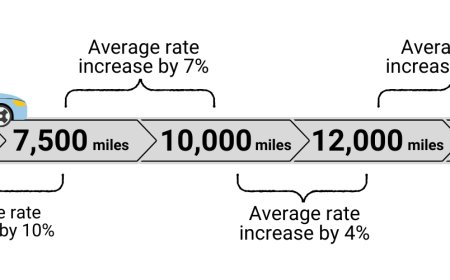Best Social Media Content Format: A Complete Guide to Maximizing Engagement

In the rapidly evolving landscape of social media marketing, choosing the right content format can make or break your digital strategy. With platforms constantly updating their algorithms and user preferences shifting toward different types of content, understanding which formats work best for your audience is crucial for success. One of the most significant debates in content strategy today revolves around long-form vs short-form content, as each format serves different purposes and appeals to distinct audience segments across various social media platforms.
The content format you choose directly impacts engagement rates, reach, and ultimately, your ability to achieve business objectives. Whether you're a small business owner, marketing professional, or content creator, understanding the strengths and applications of different content formats will help you create more effective social media campaigns that resonate with your target audience.
Video Content: The Reigning Champion
Video content has emerged as the dominant force across all major social media platforms, and for good reason. Video posts generate significantly higher engagement rates than static images or text-based content, with studies showing that video content receives 1200% more shares than text and image content combined.
Short-form video content, popularized by TikTok and now adopted by Instagram Reels, YouTube Shorts, and Facebook Reels, has revolutionized how audiences consume content. These bite-sized videos, typically lasting 15-60 seconds, are perfect for capturing attention in today's fast-paced digital environment. They're ideal for quick tips, behind-the-scenes glimpses, product demonstrations, and entertainment content that can be consumed quickly during brief social media browsing sessions.
Long-form video content, such as YouTube videos, IGTV, and LinkedIn video posts, serves different purposes. These formats are excellent for in-depth tutorials, thought leadership content, product reviews, and storytelling that requires more time to develop. While they may not generate as many quick interactions as short-form content, they tend to create deeper engagement and stronger connections with audiences who choose to invest their time in longer content.
Live video streaming has also gained tremendous traction, offering real-time interaction opportunities that no other format can match. Live streams create urgency and exclusivity, encouraging audiences to tune in and participate in real-time conversations.
Image-Based Content: Visual Storytelling
Despite the rise of video, image-based content remains a cornerstone of social media strategy. High-quality images continue to perform exceptionally well, particularly on platforms like Instagram and Pinterest where visual appeal is paramount.
Single images work best when they're visually striking, professionally composed, and tell a story at a glance. They're perfect for showcasing products, sharing inspirational quotes, highlighting achievements, or providing quick visual updates. The key to successful image content lies in maintaining consistent visual branding and ensuring each image adds value to your audience's feed.
Carousel posts, which allow users to swipe through multiple images or combine images with video, have become increasingly popular. These posts generate higher engagement rates than single images because they encourage interaction through swiping and provide more opportunities to convey information or tell a story.
Infographics represent a specialized form of image content that combines visual appeal with informational value. They're particularly effective for sharing statistics, step-by-step processes, or complex information in an easily digestible format.
Text-Based Content: The Power of Words
While visual content dominates social media, text-based content still plays a crucial role in social media strategy. Well-crafted text posts can spark conversations, share insights, and build thought leadership in ways that visual content sometimes cannot.
Short-form text content, such as Twitter posts or Facebook status updates, is perfect for sharing quick thoughts, news updates, asking questions, or providing brief tips. These posts often generate high engagement through comments and shares, particularly when they address current events or trending topics.
Long-form text content, including LinkedIn articles, detailed Facebook posts, or Twitter threads, allows for deeper exploration of topics and positions you as an expert in your field. This format is ideal for sharing industry insights, detailed explanations, case studies, or personal stories that require more context and development.
Interactive Content: Engaging Your Audience
Interactive content formats have become increasingly important for driving engagement and building community around your brand. These formats encourage active participation rather than passive consumption, leading to stronger connections with your audience.
Polls and surveys are simple yet effective ways to gather feedback, understand audience preferences, and encourage participation. Most social media platforms now offer built-in polling features that make it easy to create engaging, interactive content.
Quizzes and contests generate excitement and encourage sharing, helping to expand your reach while providing entertainment value to your audience. These formats work particularly well for brand awareness campaigns and community building initiatives.
User-generated content campaigns encourage your audience to create and share content related to your brand, providing authentic testimonials and expanding your reach through their networks.
Platform-Specific Format Considerations
Different social media platforms favor different content formats, and understanding these preferences is crucial for maximizing your content's performance.
Instagram thrives on high-quality visual content, with Reels currently receiving the highest reach and engagement. Stories provide opportunities for more casual, behind-the-scenes content, while feed posts should maintain consistent visual branding.
TikTok is entirely focused on short-form video content, with an emphasis on creativity, trends, and authentic content that doesn't feel overly polished or promotional.
LinkedIn favors professional, value-driven content, with text-based posts and articles performing well alongside professional video content and industry insights.
Twitter excels at real-time conversations and short-form content, making it ideal for news updates, quick thoughts, and participating in trending conversations.
YouTube rewards longer-form video content that provides substantial value, with successful videos typically offering educational, entertaining, or inspiring content.
Measuring Content Format Success
To determine which content formats work best for your specific audience and goals, it's essential to track relevant metrics and analyze performance data.
Engagement metrics, including likes, comments, shares, and saves, provide insights into how your audience responds to different content formats. However, it's important to look beyond vanity metrics and focus on meaningful engagement that aligns with your business objectives.
Reach and impressions help you understand how far your content is spreading and which formats are most effective at capturing attention in crowded social media feeds.
Conversion metrics, such as click-through rates, website traffic, and lead generation, provide insights into which content formats are most effective at driving desired actions.
Creating a Balanced Content Strategy
The most successful social media strategies incorporate multiple content formats to appeal to different audience preferences and platform algorithms. A balanced approach might include short-form videos for quick engagement, longer-form content for thought leadership, images for visual appeal, and interactive content for community building.
Consider your audience's preferences, platform algorithms, and business objectives when determining the right mix of content formats. Regular testing and optimization based on performance data will help you refine your strategy over time.
Future Trends in Content Formats
As social media platforms continue to evolve, new content formats are constantly emerging. Staying informed about these trends and being willing to experiment with new formats will help you maintain a competitive edge in the ever-changing social media landscape.
The key to success lies in understanding your audience, choosing formats that align with your brand and objectives, and consistently delivering value through whichever formats you choose to pursue.


































